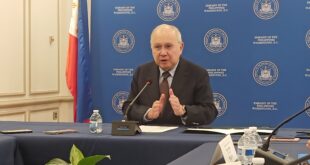
E-governance first made its presence felt in key national government offices that serve a broad sector of Philippine society — the Bangko Sentral ng Pilipinas, Government Service Insurance System, Bureau of Internal Revenue, Bureau of Customs, Social Security System, Land Transportation Office, and National Telecommunications Commission.
For several years now, and especially during the pandemic years starting in 2020, many national government agencies were able to do justice to the e-government’s goal of using information and communications technologies (ICTs) and the electronic media in transforming relations with citizens, businesses, government employees, and other arms of the government in the delivery of services to the public.
Now, President Ferdinand “Bongbong” Marcos Jr. has decided to push e-governance one step further, as he assigned the Department of Information and Communications Technology (DICT) to enable local government units (LGUs) to adapt to the e-government system as part of his administration’s digitalization initiative.
The Chief Executive made the directive at a sectoral meeting with DICT officials regarding its pending projects and cybersecurity concerns in Malacañang on Tuesday, May 23. At the meeting, DICT Secretary Ivan John Uy explained to the President that with the system, the local governments would save a lot of money and boost income generation.
The e-Gov system, announced by the DICT in December last year, includes the e-Gov Super App. This platform ensures the digitalization of government systems in the Philippines, including LGUs. The E-Gov Super App is scheduled to be launched next month.
According to Secretary Uy, the ongoing e-Governance priority projects include:
Centralizing government cloud services; e-Report, for citizens’ feedback and complaints; and e-Gov App, which will integrate all government services into one platform.
The Department is also busy in the following ICT initiatives: Broadband ng Masa, National Broadband Plan (NBP), Free Public Internet Access Program, National Government Data Center (NGDC), and Enhancing ICT competency through up-skilling and re-skilling.
We note that e-governance programs would be most helpful to LGUs in the areas of managing and tracking proposed resolutions and ordinances, applications for building permits, real property assessment and tax management system, e-business permit and licensing system, etc.
This must be the reason why the President wanted the DICT to prepare the local officials so that they could start adapting to the new system, and for the department to conduct regular upgrades of the system, saying “this is the essence of digitalization.”
In 2022, the Philippines ranked 71st out of 131 economies in the global Network Readiness Index, a significant jump from the 85th ranking in 2021 due to good performance on e-commerce legislation, high-tech exports, and ICT services exports.
With the President’s directives to the DICT, we can perhaps expect a better ranking for the Philippines next year.
*****
Credit belongs to: www.mb.com.ph
 Atin Ito First Filipino Community Newspaper in Ontario
Atin Ito First Filipino Community Newspaper in Ontario






